Phonics Teaching Resources
Make teaching phonics easy with printable phonics worksheets, activities, games and more designed for elementary ELA and ELAR teachers.
This collection of curriculum-aligned teaching resources has been carefully reviewed by our expert teaching team to make sure every resource is classroom-ready — so we can make your lesson planning easier!
New to teaching phonics, or just looking for new ways to engage your students? Read on for a primer from our teacher team!
What Is Phonics?
You've likely heard the word "phonics" thousands of times throughout your own education and maybe on one of those old as from the '90s. But what is phonics, exactly?
Phonics is technically defined as the systematic instruction of the relationships between letters and sounds in written language. But that's a mouthful, isn't it? More simply, phonics is the word we use to refer to the method of teaching reading by focusing on the relationship between written letters and the sounds they represent.
In phonics, kids learn how to decode written words by recognizing the sound-symbol correspondence.
Phonics vs. Phonemic Awareness
When we start talking about letters and their sounds, we start to wander into phonemic awareness territory. So what's the difference?
The words phonics and phonemic are similar, and the two concepts are — surprise, surprise — related. But there are key differences.
Phonemic awareness is essentially the ability to identify and manipulate individual sounds — aka phonemes — in spoken language. It's those individual sounds and their correspondence to the letter symbols that can be used by kids to then decode written words.
So students learn to recognize the individual sounds of spoken language (phonemes) and how these sounds can be represented by letters (graphemes) in written language. Then they apply this knowledge to decode written words by understanding the sound-symbol correspondence.
Consider this example:
- Let's say your student can identify the separate sounds in a spoken word such as "cat" (i.e., /k/ /a/ /t/). That's phonemic awareness.
- Now let's say you're teaching that same student that the letter "c" represents the /k/ sound and that the letter "a" represents the /a/ sound, and that these sounds combine to form the word "cat." That's phonics!
How to Teach Phonics
OK, you probably already know that phonics is all about teaching word recognition via grapheme-phoneme associations and letter-sound correspondences.
It’s a means of teaching early readers the pieces that make up a word so they can blend them together to decode the English language as readers and writers.
But how do you teach it?
In the earliest stages, phonics instruction typically begins with teaching students the most common letter-sound relationships. You start with consonants, then move on to vowels, then consonant blends.
Students then learn to sound out words by decoding the letters and blending the sounds together to form words.

Phonics Vocabulary Terms
The English language system is one of the hardest to teach and learn, so how do you teach phonics? Let’s start with the phonics vocabulary.
- For starters, there are 26 letters that create approximately 44 phonemes, the word for the individual speech sounds that make up words. Put together, phonemes make words. OK, easy enough, right?
- Well, these phonemes can be written in over more than 200 different letter combinations, known as graphemes. Graphemes can be made up of 1 letter (such as “p” in “pig”), 2 letters (such as “gh” in ghost), 3 letters (such as “igh” in night), or 4 letters (such as “ough” in rough).
- Then there are digraphs or two letters that work together to make one sound — such as “ph” in graph. But wait, isn’t that a grapheme? Yup, a digraph is a type of grapheme.
- So is a trigraph, trigraphs, aka three letters that work together to make one sound, such as “dge” in edge.
- And if you’re teaching phonics, you can’t forget dipthongs, the name for a sound that is formed by the combination of two vowels in a single syllable, such as “ou” in loud.
Most students will spend kindergarten, first, and even second grade getting a handle on all phonics elements!
- Plus Plan
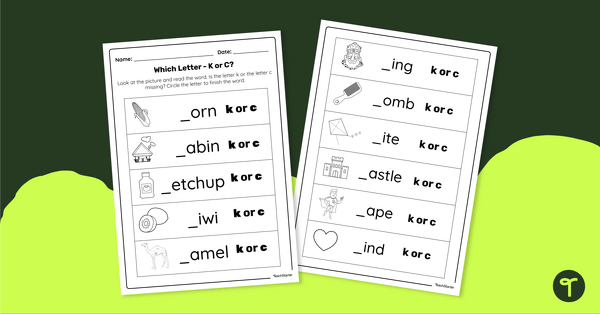
Which Letter? Worksheet - K or C
Practice identifying when to begin words with k vs. c with this printable two-page worksheet.
- Plus Plan
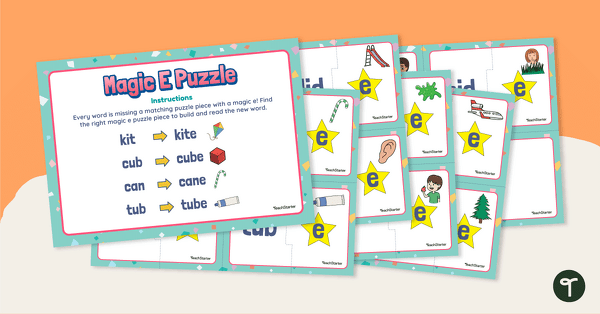
Magic E Words - Match-Up Activity
Explore words containing long vowel sounds created by the magic e.
- Plus Plan
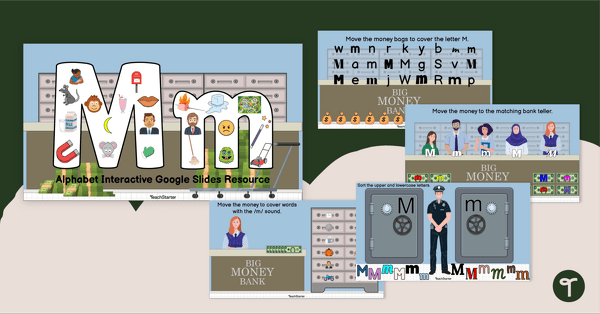
Alphabet Interactive - Letter M
Build letter recognition and phonemic awareness of the letter M with a Google Interactive Activity.
- Plus Plan
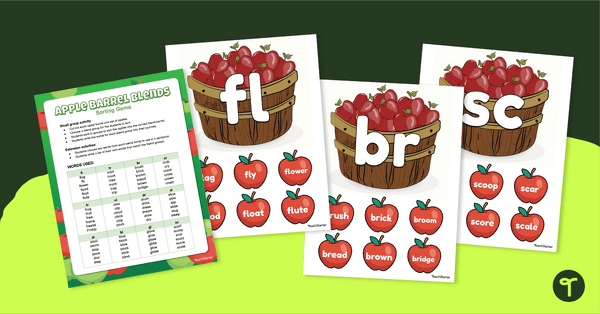
Apple Barrel Blends - Sorting Center
Supplement your phonics lessons with a consonant blend “Apple Barrel” sorting center.
- Plus Plan
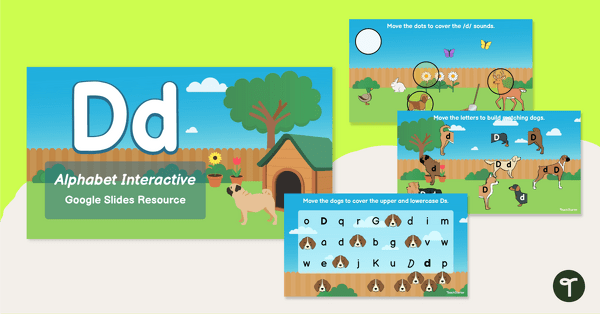
Alphabet Google Interactive — Letter D
Dive into learning the letter D with a Google Interactive Activity.
- Plus Plan
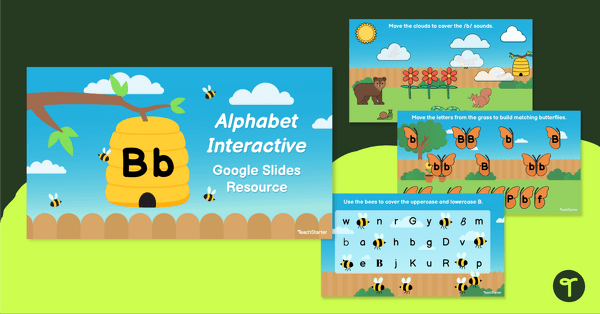
Alphabet Google Interactive — Letter B
Use a Google Slides Interactive Activity to aid students in learning the letter B.
- Plus Plan
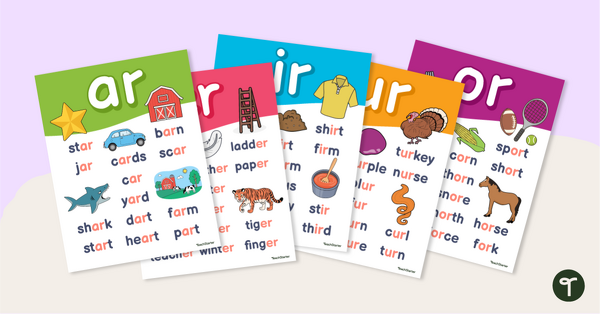
R-Controlled Vowel Posters
Supplement your phonics curriculum with an R-controlled vowel poster display.
- Plus Plan
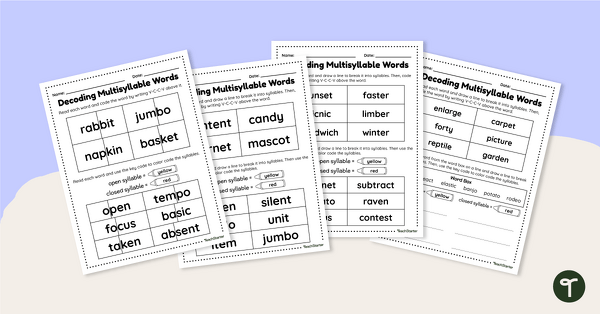
Multisyllable Words Worksheets
Build multisyllable word decoding skills with a Science of Reading based worksheet pack.
- Plus Plan
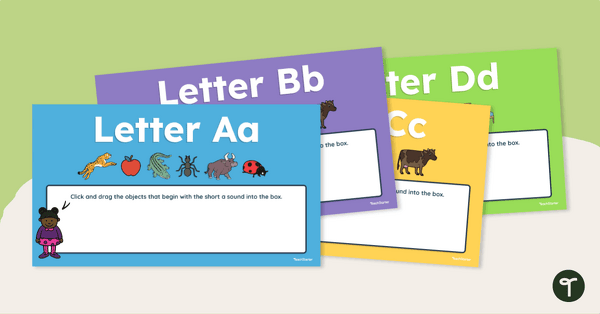
Interactive Alphabet-Google Slides Digital Learning Activity
Practice identifying letter sounds by working your way through each letter of the alphabet.
- Plus Plan
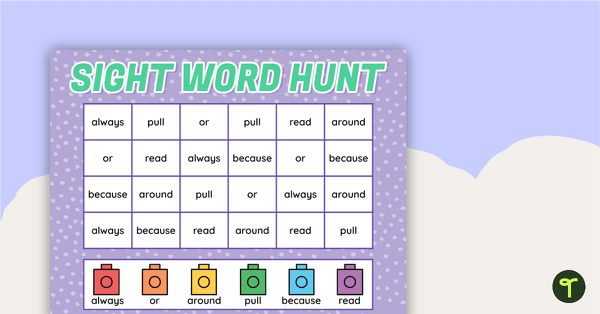
Sight Word Hunt — 2nd Grade Dolch Words List Activity
Practice reading 2nd-grade level sight words from the Dolch high-frequency words list with this activity.
- Plus Plan
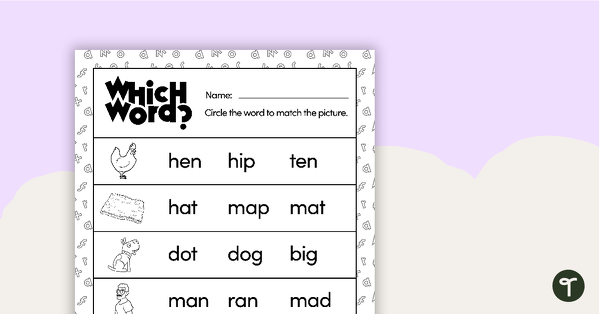
Which Word? CVC Decoding Worksheets
A set of 5 worksheets for students to practice segmenting and blending common CVC words.
- Plus Plan
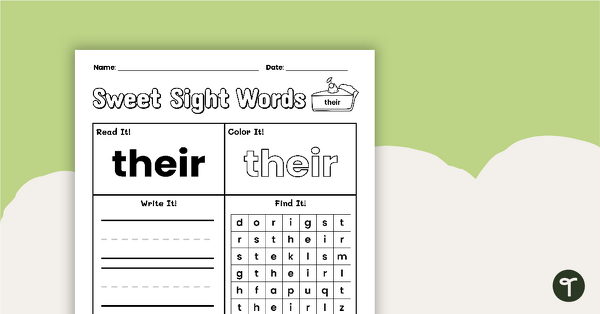
Sweet Sight Words Worksheet - THEIR
Practice reading, writing, and identifying the high-frequency word “their” from the Second Grade Dolch sight words list.
- Free Plan
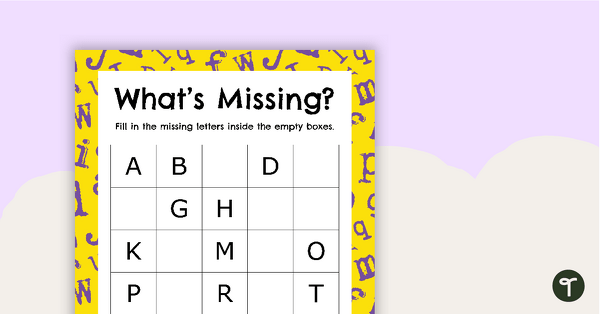
What's Missing? - Alphabet Worksheet
A set of worksheets to practice writing the letters of the alphabet in order.
- Plus Plan
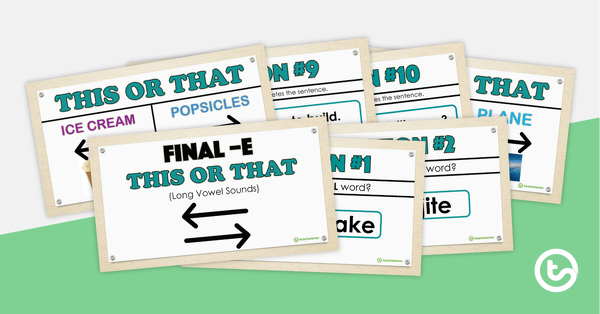
This or That! PowerPoint Game - Final e Words
An active PowerPoint game to practice decoding words with final -e.
- Plus Plan
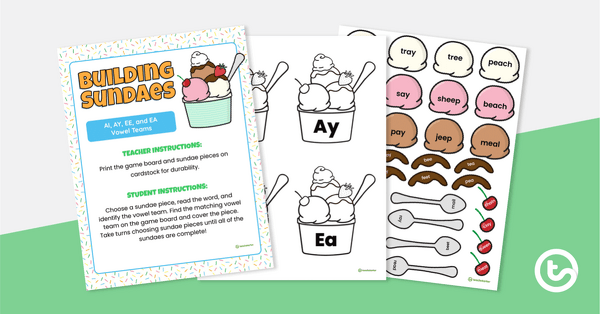
Building Sundaes Game - Vowel Teams (AI, AY, EE, and EA)
Decode words with ay, ai, ea, and ee long vowel teams by crafting cute desserts!
- Plus Plan
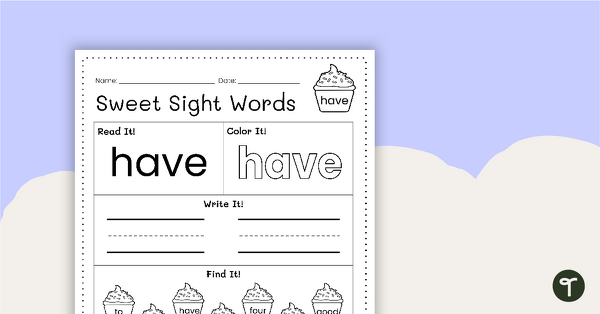
Sweet Sight Words Worksheet - HAVE
Practice reading, writing, and identifying the high-frequency word “have” from the Kindergarten-level Dolch sight words list.
- Plus Plan

Sweet Sight Words Worksheet - WAS
Practice reading, writing, and identifying the high-frequency word “was” from the Kindergarten-level Dolch sight words list.
- Plus Plan
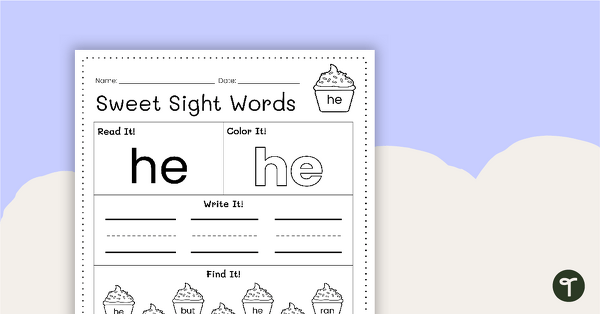
Sweet Sight Words Worksheet - HE
Practice reading, writing, and identifying the high-frequency word “he” from the Kindergarten-level Dolch sight words list.
- Plus Plan
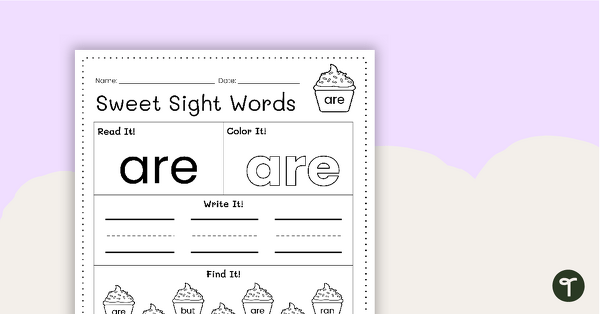
Sweet Sight Words Worksheet - ARE
Practice reading, writing, and identifying the high-frequency word “are” from the Kindergarten-level Dolch sight words list.
- Plus Plan
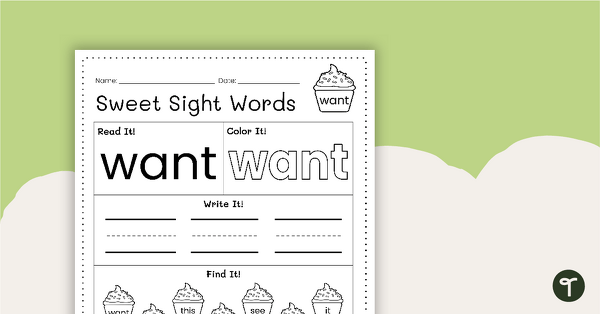
Sweet Sight Words Worksheet - WANT
Practice reading, writing, and identifying the high-frequency word “want” from the Kindergarten-level Dolch sight words list.
- Plus Plan
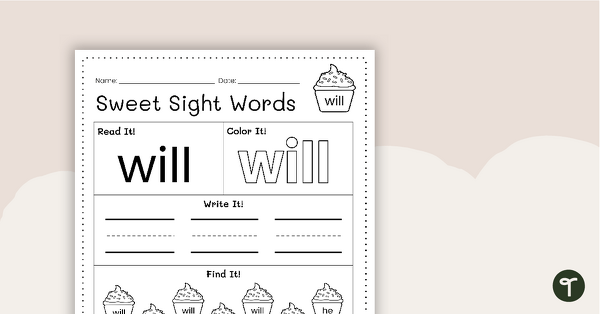
Sweet Sight Words Worksheet - WILL
Practice reading, writing, and identifying the high-frequency word “will” from the Kindergarten-level Dolch sight words list.
- Plus Plan

Alphabetical Order Scoot
Put words in alphabetical order with this 24-card movement activity for your whole class or small group.
- Plus Plan
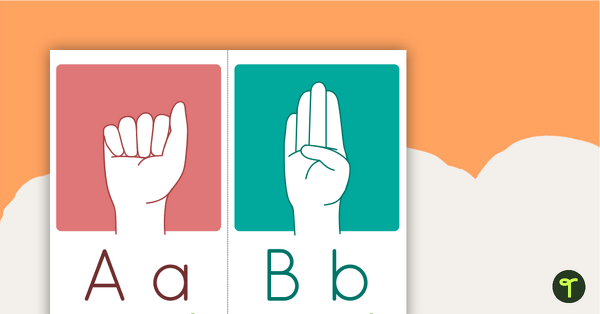
ASL Fingerspelling Alphabet - Sign Language Flashcards
A set of 26 sign language flashcards to show how to represent the letters of the alphabet when fingerspelling in ASL (American Sign Language).
- Plus Plan
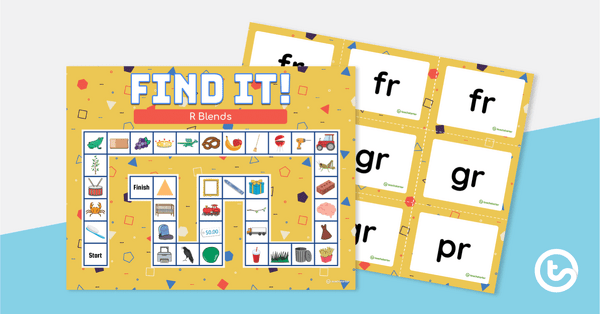
FIND IT! R Blends Board Game
Practice decoding and spelling words with this board game that focuses on R consonant blends.
- Plus Plan
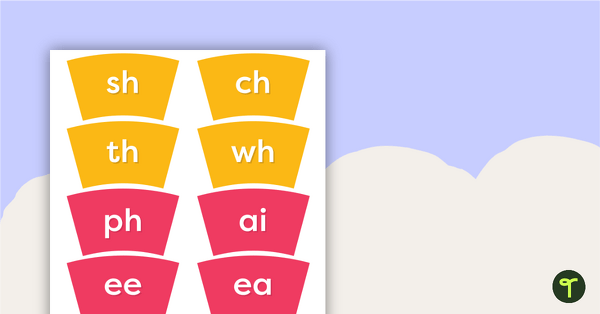
Classroom Spinner Template - Digraphs
A classroom spinner template focusing on digraphs.
- Plus Plan
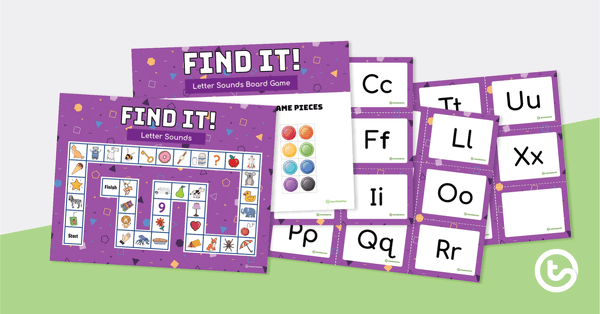
FIND IT! Letter Sounds Board Game
Develop letter-sound relationships using this engaging multiplayer board game with 26 alphabet cards that players match to recognizable pictures.
- Plus Plan
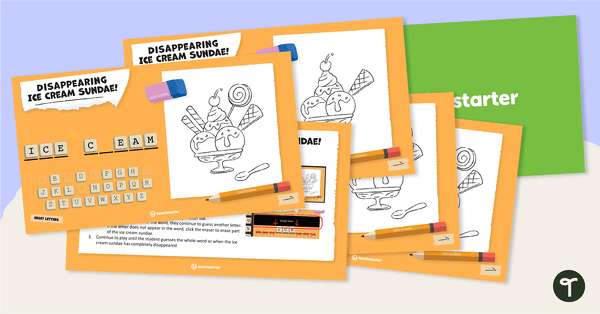
Disappearing Ice Cream Sundae (Hangman Alternative)
An interactive, kid-friendly alternative to hangman.
- Plus Plan
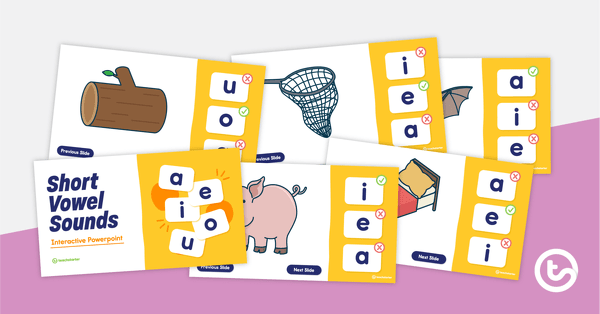
Identifying Short Vowel Sounds Interactive PowerPoint
An interactive quiz to practice identifying short vowel sounds in words.
- Plus Plan
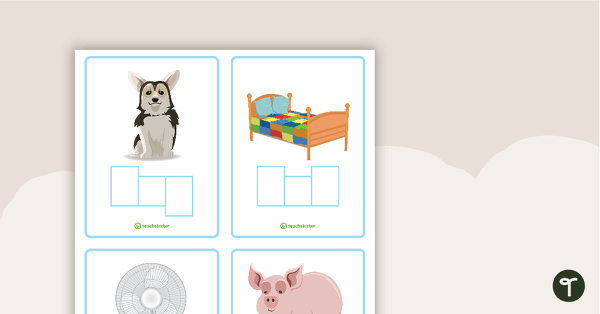
CVC Letter Boxes Task Cards
A set of 24 CVC letter boxes task cards.
- Plus Plan
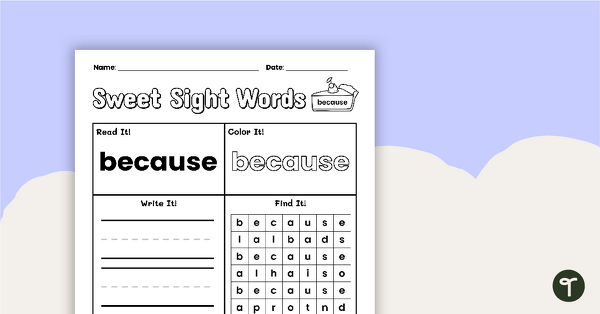
Sweet Sight Words Worksheet - BECAUSE
Practice reading, writing, and identifying the high-frequency word “because” from the Second Grade Dolch sight words list.
- Plus Plan
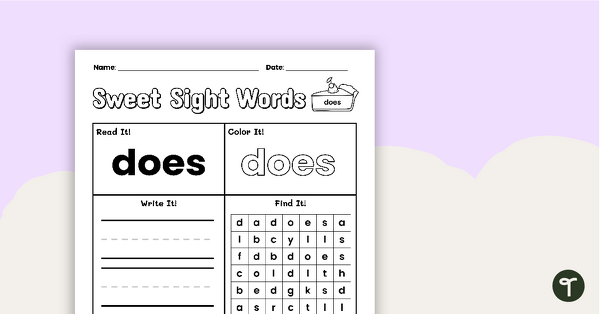
Sweet Sight Words Worksheet - DOES
Practice reading, writing, and identifying the high-frequency word “does” from the Second Grade Dolch sight words list.
- Plus Plan
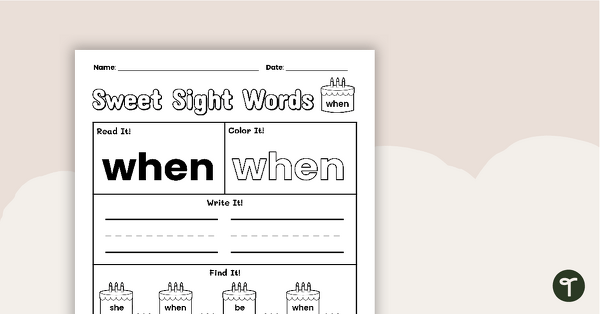
Sweet Sight Words Worksheet - WHEN
Practice reading, writing, and identifying the high-frequency word “when” from the First Grade Dolch sight words list.